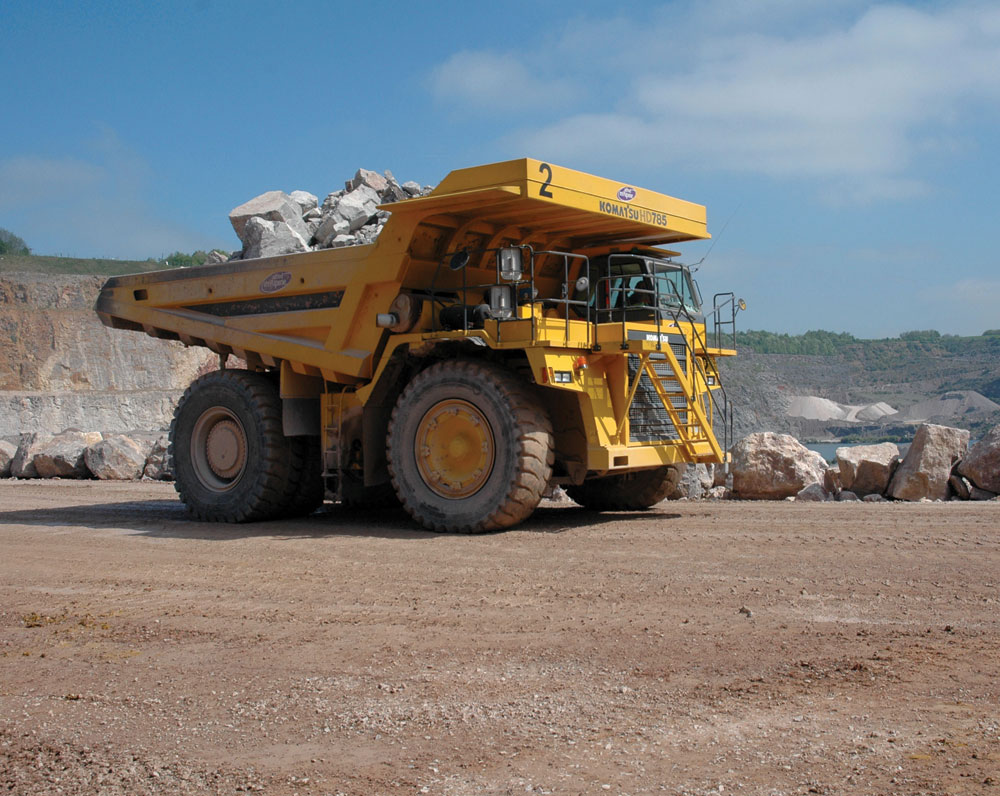UK National Mineral Forum Starts To Take Shape

Nigel Jackson, chairman of the CBI Minerals Group, reports on the progress so far
Following the CBI Mineral Group’s Living with Minerals 2 conference in November 2006 Baroness Andrews, Parliamentary Under Secretary of State at DCLG, formally launched the UK National Minerals Forum (UKNMF).
In early May 2007, virtually six months to the day later, the first detailed scoping meeting of the UKNMF took place at the Geological Society of London at Burlington House.
In order to ensure the independence of this important initiative, and to ensure probity, Dr Brian Marker OBE, formerly head of minerals at DCLG, was invited to chair the first meeting. Another former senior sector figure, Duncan Pollock, previously director of planning at the Quarry Products Association, acted as secretary, and David Highley MBE, formerly of the British Geological Survey (BGS), attended to bring added wisdom and his vast knowledge of UK industrial minerals to the proceedings.
This ‘scoping’ meeting attracted representatives from across the entire minerals sector, as part of the CBI Minerals Group delegation, together with senior departmental representatives from DCLG, Defra and DTI, as well as the Planning Officers Society.
Terms of reference and operating protocols were discussed and developed, and potential future Forum participation identified.
The scope of the Forum will be ‘all UK minerals extraction, including marine aggregates and recycled materials’. Oil and gas is currently considered to be out of scope.
Of crucial importance is the future involvement of environmental organizations and NGOs, whose views are in the process of being sought.
Issues which are likely to feature early in the deliberations of the UKNMF are:
- Declining sand and gravel, silica sand, surface coal and fluorspar reserves.
- Mining and quarrying in national parks and Areas of Outstanding Natural Beauty (AONBs).
- The mineral planning system.
- Carbon and implications for future mineral supply.
- Cumulative impact of legislation and policy.
Each topic will be considered by specially assembled working groups drawing upon published information and specially commissioned work. The results of each group’s deliberations will be fed back to delegates at the next Living with Minerals 3 conference at the Queen Elizabeth II Conference Centre in London on Monday 3 November 2008.
These are early days in the life of the UKNMF but all participants have shown great enthusiasm and interest is growing. A special domain is likely to be hosted on the BGS website once construction is complete so that the minutes of meetings are publicly available and news surrounding the work of the UKNMF can be hosted.
The next meeting of the UKNMF will take place on 2 July 2007 at the IOM3 when the final scope and terms of reference of the Forum will be agreed and the work programme for 2007/8 drawn up. A further report on proceedings will be made publicly available after this meeting.
Land-won sand and gravel, an ever worsening situation?
As an appetizer, the aggregate industry members of the CBI Minerals Group are keen to debate the increasingly worrying situation relating to declining permitted reserves of land-won sand and gravel in England and Wales.
According to a recent study undertaken by the BGS, supplemented by published national collation data, permitted reserves have plummeted from approximately 1.16 billion tonnes to 0.60 billion tonnes in the last 30 years – a reduction of nearly 50%. Reserves have actually reduced by 21% since 2001.
QPA statistics relating to replenishment rates confirm the gloomy picture and suggest that, in spite of the worsening situation, insufficient applications for new reserves are in the pipeline.
The reasons for this may be complex, particularly as the success rate for securing permissions, according to DCLG is around 90%, albeit with them taking longer to secure. Industry estimates that it can take anything from five to 15 years to secure permission from exploration to production.
Are companies flexing other sources of supply to protect hard-found sand and gravel resources as they try to time applications better to climb through ever-smaller landbank windows or is the cumulative cost of the whole planning process affecting business development decisions?
Whatever the reasons, and notwithstanding the continuing abundance of potentially workable sand and gravel resources, in an increasingly carbon-focused operating environment where proximity of supply issues could prevail, urgent attention needs to be given to the weakening sand and gravel reserve base.
Given the long lead-in times required to navigate through the mineral planning system, sand and gravel replenishment is fast becoming a key strategic issue if a steady and adequate supply of aggregates is to be maintained around the country over the medium and long term.
Taking into account that recycled supply is widely accepted as being close to maximum, the focus on future aggregate supply will necessarily fall upon primary aggregates, particularly as it is now well over 20 years since the last major rail-linked rock quarry was granted permission.
The industry believes that this sort of issue is an ideal candidate for the attention of the UKNMF, where all the relevant stakeholders can focus on understanding the issues irrespective of their individual agendas and aspirations.


